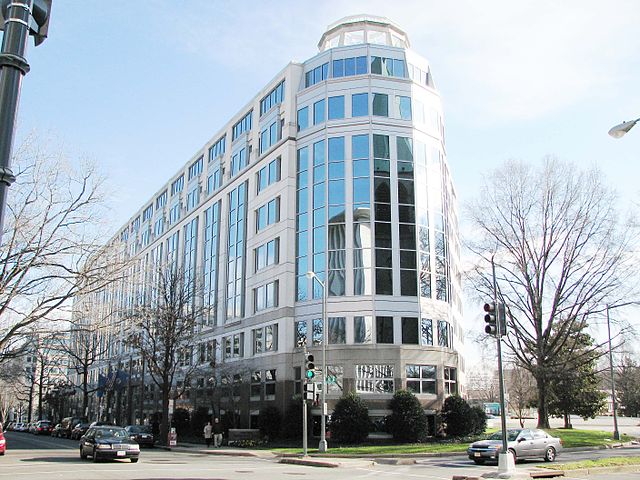“With the evolving landscape of venue jurisprudence in the district courts, we expect the growth in ITC use to continue into 2023.”
 This year was a busy one for the International Trade Commission (ITC) compared to the last few years. As of December 15, 2022, there were 56 complaints filed, compared to 50 in all of 2021. The Commission also instituted more investigations in 2022 than 2021 and has a higher number of active cases compared to last year, according to Docket Navigator as of December 7, 2022. With in-person hearings resuming, it is an exciting time at the ITC. And with the evolving landscape of venue jurisprudence in the district courts, we expect the growth to continue into 2023. This article highlights a few new developments at the ITC over the past year, as well as several important decisions.
This year was a busy one for the International Trade Commission (ITC) compared to the last few years. As of December 15, 2022, there were 56 complaints filed, compared to 50 in all of 2021. The Commission also instituted more investigations in 2022 than 2021 and has a higher number of active cases compared to last year, according to Docket Navigator as of December 7, 2022. With in-person hearings resuming, it is an exciting time at the ITC. And with the evolving landscape of venue jurisprudence in the district courts, we expect the growth to continue into 2023. This article highlights a few new developments at the ITC over the past year, as well as several important decisions.
ALJs Bullock and Shaw Retire; ALJ Moore Begins
Chief Administrative Law Judge (CALJ) Charles E. Bullock retired from the Commission in December 2021 after nearly 20 years of service. Former CALJ Bullock was appointed to the Commission in 2002 and became CALJ in 2011. Prior to his work at the Commission, former CALJ Bullock served as an ALJ at both the Environmental Protection Agency and the Federal Energy Regulatory Commission. He passed away in November after a brief illness; the ITC bar will sorely miss him and thanks him for his many years of service.
ALJ David P. Shaw retired from the Commission in July after he was appointed Chief Judge of the Copyright Royalty Board (CRB). ALJ Shaw had served as an ALJ for the Commission since 2011, before which he served as an attorney for the Commission for over 20 years. Judge Shaw will serve in an interim capacity on the CRB to complete the term vacated by his predecessor before beginning a full six-year appointment.
In February, ALJ Clark S. Cheney was appointed CALJ after briefly serving in the role in an acting capacity. CALJ Cheney was appointed as an ALJ in 2018, although he worked for the Commission’s Office of the General Counsel and as an attorney advisor for the Commission’s Office of Administrative Law Judges for several years before that. He began his career as a patent examiner at the United States Patent and Trademark Office (USPTO), eventually clerking for Judge William Curtis Bryson of the Court of Appeals for the Federal Circuit and spending several years in private practice.
In May, ALJ Bryan F. Moore became the newest ALJ at the Commission. Prior to the Commission, ALJ Moore worked as an Administrative Patent Judge (APJ) at the Patent Trial and Appeal Board (PTAB) from 2012 to 2022, where he adjudicated both ex parte appeals and America Invents Act (AIA) proceedings. He was promoted to lead APJ of the PTAB shortly before joining the Commission.
With 2022’s retirements and the new appointments over the past few years, there are several new ALJs at the Commission. Of the five currently serving ALJs, the longest-serving, MaryJoan McNamara, was appointed in 2015. The remaining four have been appointed since 2018, including CALJ Cheney (2018), ALJ Elliot (2019), ALJ Bhattacharyya (2021), and ALJ Moore (2022).
Global Crises Warrant Public Interest Delays
The global semiconductor chip shortage and the ongoing COVID-19 pandemic have resulted in some important decisions regarding public interest at the ITC.
In 2020, CMC Materials, Inc., filed a complaint alleging violations of Section 337 regarding the importation of certain chemical mechanical planarization slurries and components thereof that are used in the manufacture of semiconductor chips. Certain Chemical Mechanical Planarization Slurries and Components Thereof, Inv. No. 337-TA-1204. In a final initial determination (ID), the ALJ found a violation of Section 337 for patent infringement. A subsequent recommended determination (RD) stated that a limited exclusion order (LEO) and cease and desist orders (CDOs) would be appropriate, as well as a bond in the amount of 100% of the entered value for covered products imported during the Presidential review period. On its review of the ID, the Commission requested briefing on the public interest. Non-party Intel filed a statement arguing the negative impact on the public interest that the imposition of an LEO would have in light of the current semiconductor chip shortage. The Commission subsequently affirmed the Section 337 violation in a January 2022 opinion and issued an LEO and CDOs for the infringing products. However, the Commission found that the public interest warrants a delay of up to one year to allow entities using the infringing products in the semiconductor industry adequate time to switch to non-infringing products.
Also in 2020, Koninklijke Philips, N.V., and Philips RS North America, L.L.C., filed a complaint alleging Section 337 violations regarding the importation of cellular communications modules and associated products used in connected respiratory devices, including CPAP machines. Certain UMTS and LTE Cellular Communication Modules and Products Containing the Same, Inv. No. 337-TA-1240. While finding that no violation had occurred in his final ID, ALJ Shaw stated in his RD that if the Commission disagreed and issued an LEO and CDOs, it should delay them for 12 months to accommodate the public interest. ALJ Shaw cited evidence that the ongoing COVID-19 pandemic has increased demand for respiratory medical devices and that it could take manufacturers over a year to switch to non-infringing products, as cellular communication modules generally are not interchangeable. However, the Commission adopted ALJ Shaw’s determination of no violation in its July 2022 review in part of the ID, ultimately rendering the public interest issue moot.
These exemplary decisions highlight increased attention on public interest at the Commission, particularly as it relates to supply chain shortages brought about by the COVID-19 pandemic.
The Interim ID Program Finds Its First Use
In 2021, the Commission instituted the Interim ID Pilot Program, which allows ALJs to hold evidentiary hearings and receive briefing on one or more discrete issues prior to a main evidentiary hearing. Such issues include infringement, patent eligibility, patent invalidity, standing, or domestic industry. Interim IDs must be issued no later than 45 days before the scheduled start of the main evidentiary hearing. When an ALJ issues an interim ID, the Commission may choose to review and resolve the issues presented. Issues for interim ID may be case-dispositive or resolve significant issues in advance of the main evidentiary hearing, thereby facilitating settlement or even resolving the entire dispute between the parties. The program is intended to support the Commission’s statutory obligation to complete Section 337 investigations procedures expeditiously.
Despite interest from the ITC bar, the program has not been widely used by the ALJs to date. Of all of the interim ID requests since the program launched in May 2021, all have been denied. To date, the interim ID program has been used only once, where CALJ Cheney decided to use it sua sponte.
Specifically, in January, the Commission instituted investigations in Certain Replacement Automotive Lamps I & II, Inv. Nos. 337-TA-1291 & 1292. The 1291 Investigation was initiated by complainants Kia Corporation and Kia America, Inc., and the 1292 Investigation by complainants Hyundai Motor Company and Hyundai Motor America, Inc. The complainants alleged Section 337 violations concerning the importation of “replacement automotive headlamps and taillamps” for certain Kia and Hyundai vehicles. Kia and Hyundai requested that the Commission place the investigations in its 100-Day Pilot Program to adjudicate the economic prong of the domestic industry requirement, which the Commission denied. However, presiding CALJ Cheney, sua sponte, set an interim evidentiary hearing limited to the economic prong of the domestic industry requirement under the Interim ID Program, making CALJ Cheney the first ALJ to utilize the program. In July, CALJ Cheney issued his interim ID, finding that the complainants had satisfied the economic prong requirement. The Respondents subsequently petitioned the Commission for review of the interim ID, which the Commission granted and requested additional briefing from the parties.
The End of PTAB Discretionary Denials in ITC Investigations
In recent years, the fast nature of the ITC meant that it was difficult for a respondent in an ITC investigation to succeed in challenging the patent through an inter partes review (IPR) petition because of discretionary denials by the PTAB. That appears to have changed this year. In particular, in June, USPTO Director Kathi Vidal issued updated guidance regarding discretionary denials in AIA post-grant proceedings involving parallel litigation in other forums. In Apple Inc. v. Fintiv, Inc., IPR2020-00019, Paper 11 (PT AB Mar. 20, 2020), the PTAB set out six factors governing the PTAB’s use of discretion to deny institution of post-grant proceedings in view of parallel litigation involving the challenged patent: (1) whether the court granted a stay or evidence exists that one may be granted if a proceeding is instituted; (2) proximity of the court’s trial date to the Board’s projected statutory deadline for a final written decision; (3) investment in the parallel proceeding by the court and the parties; (4) overlap between issues raised in the petition and in the parallel proceeding; (5) whether the petitioner and the defendant in the parallel proceeding are the same party; and (6) other circumstances that impact the Board’s exercise of discretion, including the merits.
The PTAB had previously applied the Fintiv factors to deny review based on parallel litigation in both district courts and the ITC. Among other provisions, the updated guidance limits Fintiv denials to parallel district court proceedings, prohibiting their application to parallel proceedings in the ITC. The Fintiv factors seek to promote efficiency by reducing duplicative efforts among the PTAB and other forums. But unlike district courts, the ITC cannot invalidate patents, and its invalidity rulings are binding on neither district courts nor the USPTO. ITC investigations cannot conclusively resolve assertions of patent invalidity, as those determinations require district court litigation or PTAB proceedings. As such, the Director’s interim guidance acknowledges that denying institution based on parallel ITC investigations does not necessarily minimize conflicts between the PTAB and district court proceedings. This new guidance will remove a hurdle for respondents in ITC proceedings who wish to challenge asserted patents at the PTAB by filing IPR petitions.
Image:
“The USITC in Washington DC.”
Licensed under CC BY-SA 3.0.

![[IPWatchdog Logo]](https://ipwatchdog.com/wp-content/themes/IPWatchdog%20-%202023/assets/images/temp/logo-small@2x.png)


![[Advertisement]](https://ipwatchdog.com/wp-content/uploads/2024/04/UnitedLex-May-2-2024-sidebar-700x500-1.jpg)
![[Advertisement]](https://ipwatchdog.com/wp-content/uploads/2024/04/Artificial-Intelligence-2024-REPLAY-sidebar-700x500-corrected.jpg)
![[Advertisement]](https://ipwatchdog.com/wp-content/uploads/2024/04/Patent-Litigation-Masters-2024-sidebar-700x500-1.jpg)

![[Advertisement]](https://ipwatchdog.com/wp-content/uploads/2021/12/WEBINAR-336-x-280-px.png)
![[Advertisement]](https://ipwatchdog.com/wp-content/uploads/2021/12/2021-Patent-Practice-on-Demand-recorded-Feb-2021-336-x-280.jpg)
![[Advertisement]](https://ipwatchdog.com/wp-content/uploads/2021/12/Ad-4-The-Invent-Patent-System™.png)






Join the Discussion
No comments yet.